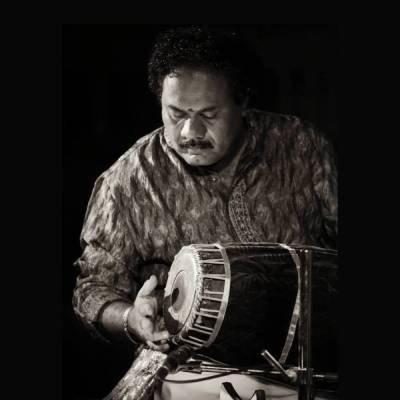A Brief History of Western Classical Music:
Western classical Music refers to the traditional performing art rooted in Europe and North America. It encompasses compositions written for Orchestras, Choirs, Chamber Ensembles and solo instruments characterized by formal structures, intricate melodies and often performed in concert setting- in an Amphi theatre, Auditorium or a Concert Hall etc.
Origin:
Western Classical Music history is traditionally understood as beginning with “Plainchant” or “Gregorian Chant”. Plainchant or Gregorian chant was transmitted by memory unity the early 9th century when the Holy Roman Emperor Charlemagne arranged for it to be notated. Plainchant or Gregorian chant was largely sung by Monks, Nuns and clerics instead of professional singers.

Western Classical Musical Notation has been an evolving system dating back to at least Greece and Rome. Even-though the developer of the letters as pitches system was Roman, most notations in Europe now use the “tonic sol fa” system made famous in the movie “The Sound of Music”.
Tonic Sol fa was introduced by a monk named Guido d’ Arezzo
Around 1000AD and used to sounds “Ut- Re- Mi-Fa-Sol-La-Si” to represent the pitches in an Octave. Ut was later changed to Do (for Dominus) so that god could be considered as the beginning of musical scales, Si was later changed to Te in 1800s so each note will begin with a unique letter.
While everyone is familiar with do-re-mi-fa, the most wide used method of naming notes in the English speaking world is an updated version of the old Roman system, with seven letters of the Alphabet, A through G representing the pitches of an Octave.
A DO SA
B RE RI
C MI GA
D FA MA
E SOL PA
F LA DHA
G TE NI
Timeline chart of Musical Era in Western Classical Genre:
- Medieval (500-1400) – earliest form of music in Western Classical genre, saw the rise of secular music composers like trotbadour and Music genres revolved around Spiritualism, religion, love and chivalry.
- Renaissance (1400-1600) – Flourishing styles of polyphonic music, choral music and madrigals- saw the rise of composers like Josquin des Prez and Palestrina.
- Baroque (1600-1750) – Era of prominent composers like Johann Sebastian Bach, George Federic Handel and Antonio Vivaldi. This period saw the development of Opera, oratorio and instrumental forms like concerto and sonata.
- Classical (1730-1820) – Marked by clarity and balance in Famous music composers of this era include – Wolfgang Amadeus Mozart, Joseph Haydn and Ludwig van Beethoven. String quartets, symphonies and sonatas became prominent in this era.
- Romantic (1815-1910) – This Era has music emphasising on emotion, expression and Famous composers include- Franz Schubert, Frederic Chopin, and Pyotr llyich Tchaikovsky. Music had increased hormonic complexity and orchestral size.
- Modern (1900-present) – famous composers include Claude Debussy, Arnold Schoenberg Modern composers continue to explore new sounds and techniques.
Throughout its history Western Classical Music has evolved through cultural, social and technological changes, reflecting creativity and innovation of composers across generations.
Distinct features that set apart Western Classical Music:
- Notation
- Harmony and Tonality
- Formal Structures
- Instrumentation and Orchestration
- Emphasis on Technique and Virtuosity
- Expression and Emotion
- Development of Music Themes
- Concert Tradition/ Concert setting
These features collectively define the unique characteristics of Western Classical Music, distinguishing it from other music genres and tradition.
A short Comparative study between Carnatic Music and Western Classical Music:
Comparing Carnatic and Western Classical Music reveals both similarities and distinct differences reflecting unique cultural origins, performance tradition and musical structures:
Characteristic Feature:
| Monophonic – Based on Melody only. | Polyphonic – Based on Melody and includes elements like Harmony |
| Composers created music by singing. | Composers created music for voice and instruments (with specific intent to formulate). |
| Later the same tune of Melody was played on the instruments; nothing was composed specifically for the instruments. | Existence of virtuosic pieces composed specifically for instruments to showcase the capabilities of the instrument/performer. |
| Songs originated from outpouring of the composer’s devotion towards one’s favourite God or Goddess. | Often Compositions were commissioned by monarchs or royalty from the famous composers of that time for various occasions. |
| Music was not created just to compose. | Created with Specific intent to compose. |
| Since music was created by singing, main stream music is based only on lyrics. | Concertos, sonatas, symphonies were designed for instruments, and hence lyrics had little to no role. |
| Instruments used to copy singing were a later introduction. | Only Music created for Opera and voices had lyrics. |
| Contents of the main stream music are always devotional. | Most music for voices are devotional type. (Cantatas, Mass in B minor, Requiem). Etc.. |
| Music was passed on by listening and taught by the method of “Playing by Ear” | Music was passed on mainly by notation. |
| Even today music is learnt mostly by listening (and with little help from Notation) | Suzuki method is recent example of adopting the practice of playing by ear. |
| Notation cannot give a complete or true Aural image of the Music. | Notation can give an almost overall Aural Image of the Music. |
| Ornamentation is very complex and there is no standard system of notating. | Ornamentation (trills, turns, mordent) are specifically indicated. |
| Dynamics (and style of ornamentation) are chosen by performers, so renditions vary. | Dynamics (pianossimo, Forte) are indicated in the score and are played as written, yet open for individual interpretation. |
| Major scope for improvisation is available- Through out the composition, separately before the composition and after the composition as Swarakalpanas. | Mostly no scope of improvisation. Music is usually played as written. |
| Music Making was not practiced by groups. | Music making was practiced by groups (Churches were in fact the origin points of harmonising). |
1. Cultural and Historical Origins:
Carnatic Music:
Originates from South India, particularly from the states of Tamil Nadu, Andhra Pradesh, Telangana, Karnataka, and Kerala. It has roots in ancient Hindu traditions and has evolved over millennia through the contributions of various composers and musicians. If you’re interested in learning online music lessons, this foundation will help you understand the art better.
Western Classical Music:
Originates primarily from Europe, with major developments in Italy, Germany, Austria, and France. It emerged from medieval chant and secular music traditions, evolving through the Renaissance, Baroque, Classical, Romantic, and Modern periods.
2. Musical Structure:
Carnatic Music:
- Raga: Melodic framework that dictates the scale, notes, and characteristic phrases of a composition.
- Talam: Rhythmic framework that defines the rhythmic cycles and patterns.
- Improvisation/Manodharmam: Extensive use of improvisation within the framework of raga and tala, particularly in the form of alapana (melodic exploration) and niraval (elaboration of lyrical lines).
Western Classical Music:
- Key and Harmony: Emphasis on harmonic structure based on scales and keys.
- Form: Structured forms such as symphonies, sonatas, concertos, and operas with distinct movements.
- Counterpoint: Development of multiple melodic lines interacting harmoniously.
- Orchestration: Detailed scoring for various instruments within an orchestra.
3. Performance Practices:
Carnatic Music:
- Solo and Ensemble: Often performed solo or accompanied by a small ensemble including violin, mridangam (percussion), and possibly a drone instrument like tambura.
- Concert Structure: Typically includes compositions in different ragas and talas, progressing from slower to faster rhythms.
- Emphasis on Bhava: Expression and emotional content are crucial aspects of performance.
Western Classical Music:
- Ensemble Performance: Often performed by large orchestras or chamber groups.
- Concerto and Symphony: Features soloists (in concertos) and a structured multi-movement form (in symphonies).
- Conductor: Leads the ensemble, interpreting the score and guiding the performance dynamics.
4. Notation and Learning:
Carnatic Music:
- Oral Tradition: Traditionally transmitted through guru-shishya parampara (teacher-disciple tradition).
- Syllabic Notation: Uses solfège/ Vocal sounding method (swarm) to represent pitches and rhythm.
- Compositional Forms: Includes varnams, Kritis, and Padams, with emphasis on lyrics and poetic expression.
- Staff Notation: Standardised system for representing pitch, rhythm, dynamics, and articulation.
- Formal Education: Taught in conservatories and music schools with a focus on theoretical knowledge, technique, and repertoire.
- Diverse Genres: Includes instrumental and vocal music, opera, chamber music, and symphonic works.
5. Influence and Adaptation:
Carnatic Music:
It predominantly maintains its traditional forms and practices, with adaptations seen in fusion music and collaborations with other genres.
Western Classical Music:
It has evolved through various stylistic periods and continues to influence global music genres, including jazz, film music, and contemporary compositions.
Why is Western Classical Music Gaining Popularity?
Despite our cross-comparative genre Western Classical Music continues to maintain and gain popularity for the following reasons:
- Timelessness and Legacy: It has a rich history, spanning centuries with composers like Mozart, Beethoven, Bach producing enduring masterpieces. These compositions continue to be revered for their complexity, beauty and emotional depth.
- Cultural Significance: Western Classical Music is often associated with high culture and sophistication. Its Repertoire includes iconic works that have been ingrained in cultural conciseness, influencing art, literature and pop culture.
- Education and Training: Formal educational institutions, conservatories and music schools emphasising technicality, proficiency etc ensure a steady stream of trained musicians and educators.
- Performance tradition: Classical music thrives in concert halls and Opera houses worldwide. This live experience of such a magnanimous ensemble, soloist etc. often added to its appeal.
- Innovation and Diversity: While rooted in tradition, classical music continues to evolve, exploring new styles genres etc to attract diverse audience.
- Emotional and Intellectual appeal: Classical Music offers a profound emotional and intellectual experience. Its intricate harmonies, dynamic contrast and thematic developments engage the listeners on multiple levels fostering introspection and emotional resonance.
- Accessibility through technology: Digital platforms and streaming services make classical music more accessible than ever. Audiences can discover, explore and enjoy a vast repertoire of recordings and live streamed performances from all around the world.
- Cross culture influence: Classical Music’s influence extends globally, with orchestras, festivals and competitions held worldwide. Collaboration between musicians from different cultural backgrounds contributes to its ongoing relevance and appeal.
Conclusion:
While Carnatic music and Western classical music differ significantly in their cultural origins, musical structures, and performance practices, both are rich traditions with deep historical roots and sophisticated artistic expressions. Each tradition has contributed uniquely to the global musical landscape, showcasing diverse approaches to melody, rhythm, harmony, and expression.
Inference:
Overall, Western Classical Music’s appeal and enduring popularity stems from its artistic depth, cultural significance, educational infrastructure and its ability to resonate with audiences across generations and cultural boundaries.


















